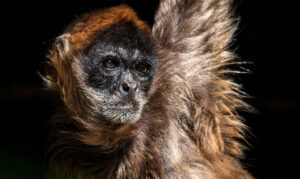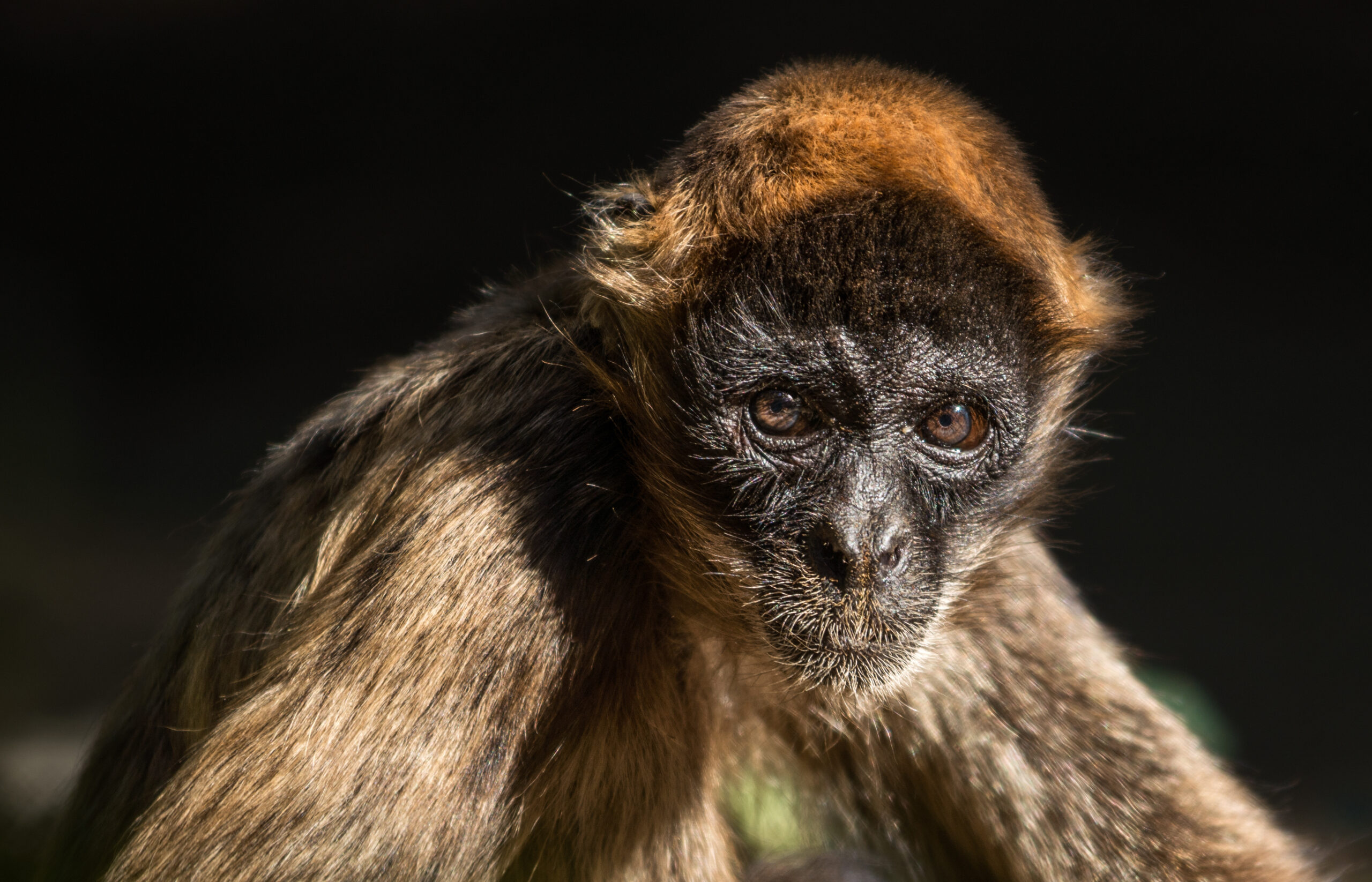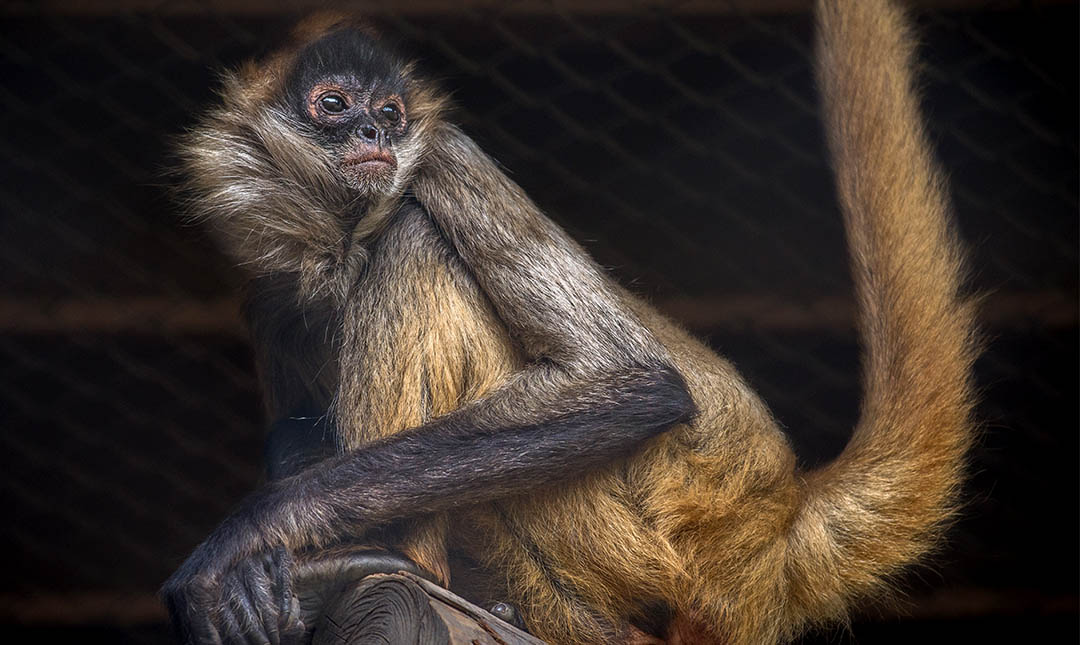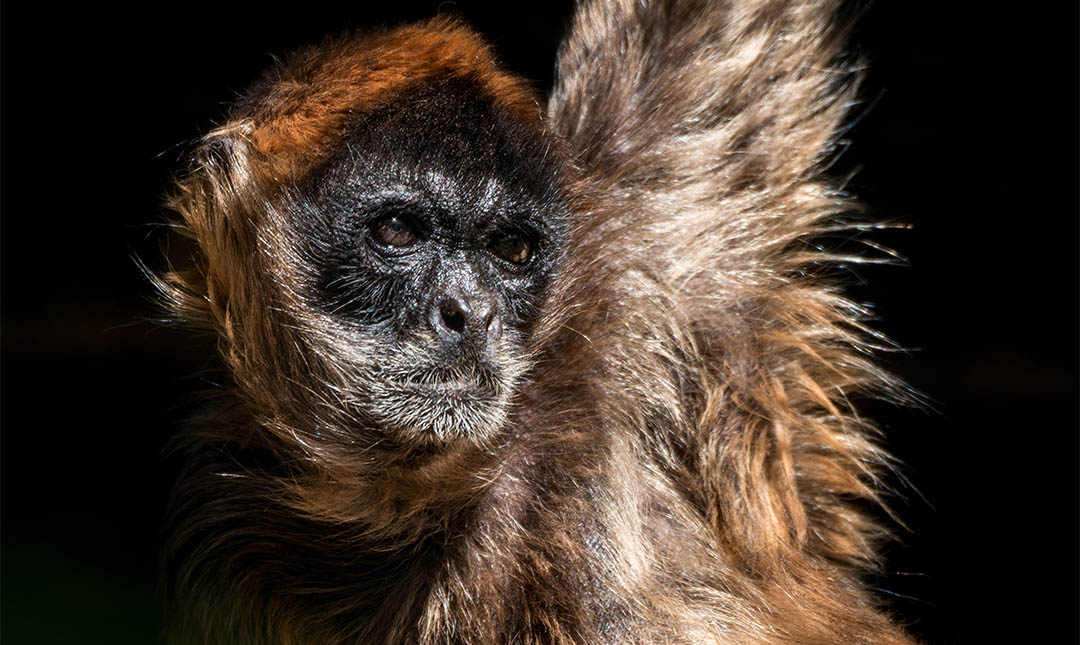About
Like most primates, spider monkeys have opposable big toes that function like thumbs to securely grab branches. They also have prehensile tails that can be used as a fifth limb for climbing and manipulating objects. A hairless area on the underside of the tail tip provides a strong grip.
Dangling from a tree branch by their tails with long, slim limbs splayed, these monkeys resemble spiders dangling from a web, which is how they got their name. These monkeys break into smaller groups to forage during the day and return to the group (which numbers between 20 and 30 individuals) at night. They have a slow reproduction rate, giving birth only every two to four years. Populations have declined more than 50 percent during the past 45 years as a result of habitat loss.


Status
Geoffroy’s spider monkey is endangered; mainly due to habitat loss. The L.A. Zoo’s spider monkeys are part of a Species Survival Plan.
Habitat
Black-handed spider monkeys live in Central America, from southeast Mexico to western Panama. Spider monkeys make their homes in trees in the upper levels of tropical and subtropical rainforests.
Diet
Their diet is 80 percent fruit with some young leaves and flowers. Their keen color vision allows them to select the best fruit.
Physical Characteristics
Their tail is longer than their body, growing 22 to 33 inches long while their body is 14 to 20 inches. Lifespan in the wild is unknown, but in human care these monkeys live about 30 to 40 years.
LOCATION WITHIN THE ZOO
You’ll find this animal in the South America section. See Zoo Map.



